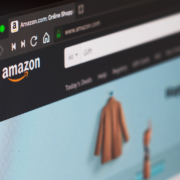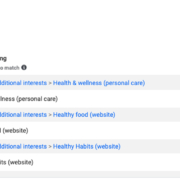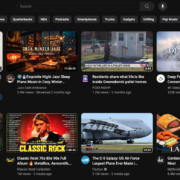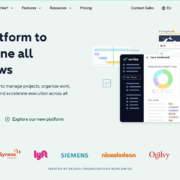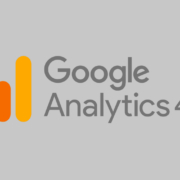What are you even doing if you’re not trying everything you can to advertise directly to your target audience? In today’s digital landscape, it’s even easier. With the rise of online marketing, companies now have access to advanced tools and techniques that enable them to target their ideal customers with unprecedented precision and efficiency, thanks to programmatic targeting.
What Is Programmatic Advertising?
Programmatic advertising refers to the buying and selling of digital advertising space in real-time through the use of automation software and algorithms. It can target specific audience segments, optimize ad placements, and deliver relevant ads to individuals at the right time and on the right platforms. This data-driven approach allows advertisers to reach their target audience more effectively, improve ad campaign performance, and optimize ROI. Programmatic advertising encompasses various formats, including display ads, video ads, native ads, and mobile ads — and it has revolutionized the way digital advertising is bought and sold in the modern advertising ecosystem.
Media Buying 101
Media buying is an integral part of programmatic marketing. In programmatic advertising, media buying refers to purchasing ad inventory through automated systems and programmatic advertising platforms, utilizing real-time bidding (RTB) and programmatic technology. It involves the selection of ad placements, targeting parameters, budget allocation, and optimization strategies to reach the desired audience effectively.
Advertisers leverage programmatic platforms and demand-side platforms (DSPs) to access ad exchanges and supply-side platforms (SSPs) where ad inventory is available. Through programmatic technology, media buyers can define their target audience based on various parameters such as demographics, interests, behaviors, and locations.
Programmatic ad buying allows advertisers to reach a vast inventory of digital ad space across multiple channels, including display, video, mobile, social media, and connected TV. It enables precise audience targeting, optimizing ad delivery to the most relevant users, thereby improving campaign effectiveness. Real-time bidding allows for efficient ad purchasing, as advertisers bid for ad impressions based on their targeting criteria and budgets, ensuring cost-effective allocation of resources.
Benefits of Programmatic Advertising
Programmatic advertising provides precise audience targeting, allowing advertisers to reach the right people with relevant messages. By leveraging data insights and advanced targeting options, programmatic marketing ensures that ads are delivered to individuals who are more likely to be interested in the promoted product or service. Through continuous monitoring and automatic adjustments, marketers can optimize ad placements, creative variations, and bidding strategies to maximize results and improve return on investment for their programmatic campaigns.
Programmatic advertising provides valuable data and insights that can inform future campaigns. Marketers can gain valuable insights by analyzing performance metrics and user behavior to refine their targeting strategies and make decisions based on customer data.
Types of Programmatic Ads
Several types of programmatic ads cater to different ad formats and objectives. The choice of ad type depends on the campaign objectives, target audience, and the platforms where the ads are displayed.
Display Advertising
Display ads are visually appealing ads that appear as banner ads or images on websites, apps, or other digital platforms. They can be static or dynamic, and programmatic technology enables real-time bidding and precise targeting for display ad placements.
Video Ads
Video Ads: Video ads appear before, during, or after online video content. Programmatic video ads can be skippable or non-skippable and appear on platforms like YouTube, streaming services, and various news and entertainment sites.
Native Ads
Native ads blend seamlessly with the surrounding content, matching the style and format of the platform on which they appear. Programmatic native ads are designed to look and feel like organic content, resulting in higher engagement and user acceptance.
Audio Ads
Audio ads are delivered through audio streaming platforms, podcasts, or internet radio. Programmatic audio ads allow advertisers to target specific audiences based on their listening habits, demographics, and interests.
CTV Ads
Connected TV (CTV) and over-the-top (OTT) ads are displayed on television screens through streaming services, smart TVs, or streaming devices. Programmatic technology enables targeted ad delivery to viewers consuming content on these platforms.
Social Media Ads
Programmatic technology is used for targeted ad placements on popular social media platforms like Facebook, Instagram, Twitter, and LinkedIn. Advertisers can leverage user data and precise targeting options available on these platforms to reach their desired audience.
Finding Your Audience
With its data-driven approach and advanced targeting capabilities, programmatic strategies enable businesses to connect with their target audience.
Finding Where Your Audience Lives Through Display Ads
Run a display campaign that targets your audience using the demographic and psychographic data you have available. As you run ads, you receive reports on where your ads are placed on the internet, giving you insight into what websites they like to visit.
Finding Your Audience On Social
An efficient and cost-effective way to reach your audience is through lookalike audiences. Use your existing customer list to build a lookalike audience that matches your existing customers up to other profiles on Facebook. Since most people have a profile, you’re guaranteed to find hundreds of matches. For B2B companies, Facebook might not seem like the most effective way to reach your audience, but lookalike audiences are a great way to do so on the platform.
Contextual Targeting
For those looking for full demographic or psychographic information on their audience and have an idea about what websites their audience visits and what terms they’re searching, you can create a contextual/keyword targeting campaign. This can be done through Google Ads, and you can target specific websites and terms to reach your target audience. As your ads run, you receive data back from Google, telling you more about your audience (income, age range, gender, etc.) and even expanding on the types of websites they like to visit.
Setting Up Geofences
If you have a specific place or list of places that your audience frequents (e.g. a retail location), you can set up a geofence around that location and serve ads in that location. The data you get back from this tells you more about the demographics and psychographics of the audience, along with the type of sites they like to visit.
Understanding Your Audiences with Google Search Ads
If you’re running search ads and want to validate the type of audience that is seeing the ads, you can set up observation audiences within Google Ads. These tell you how often ads were served to this audience and whether or not people clicked on your ads. This is especially helpful if you want to understand whether or not you’re targeting the right keywords in your campaigns.
What About Retargeting?
Retargeting ad campaigns focus on re-engaging with users who have previously interacted with a brand or visited a website. By placing a pixel or code snippet on their website, advertisers can track user behavior and then serve targeted ads to those individuals as they browse other websites or platforms. Retargeting allows businesses to stay top-of-mind with potential customers who have previously shown interest in their products or services, increasing the likelihood of conversion.
Optimize Your Online Ad Targeting
Adjusting your programmatic ad targeting is of utmost importance in optimizing the effectiveness of your online advertising campaigns. By analyzing campaign performance data and leveraging insights gained from user behavior, you can make informed adjustments to your targeting parameters. By fine-tuning your targeting, you can focus your ad spend on the most promising segments, reduce wasteful impressions, and improve your return on investment (ROI). Ultimately, the ability to adjust your programmatic ad targeting empowers you to optimize campaign performance, increase conversions, and drive sustainable business growth.
Analyzing Audience Data
Analyzing audience data allows you to understand their demographics, interests, behaviors, and preferences. By diving into this data, you can identify patterns, trends, and audience segments that are most likely to respond positively to your ads. This data-driven approach empowers you to refine your targeting strategies, optimize ad placements, and deliver personalized messaging that resonates with your audience.
Additionally, analyzing audience data provides valuable feedback on the performance of your campaigns, allowing you to make optimizations in real-time. By constantly monitoring and analyzing the data, you can uncover valuable insights that inform your decision-making, drive continuous improvement, and maximize the effectiveness of your programmatic ad campaigns.
Hire the Programmatic Targeting Pros
If you want an effective digital marketing strategy, you need to set up your programmatic targeting correctly. Hiring high-quality programmatic professionals – like us here at iSynergy – allows you to focus on your business instead of managing ad networks, third-party data, first-party data, keeping up with advancements in ad tech, and everything else that goes into programmatic advertising. Give us a call today to start making your digital marketing dreams come true.





